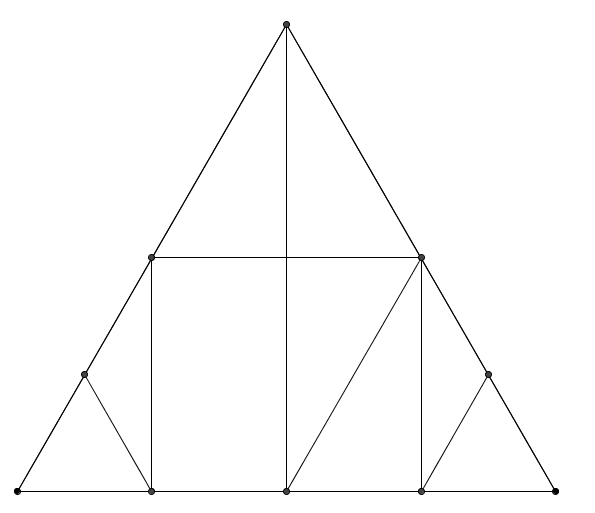Or search by topic
Number and algebra
Geometry and measure
Probability and statistics
Working mathematically
Advanced mathematics
For younger learners
An Equilateral Triangular Problem



- Problem
- Getting Started
- Student Solutions
- Teachers' Resources
Why do this problem?
This problem can be used in a number of different ways - for students to think about angles, area, or properties of polygons.
Possible approach
Show students the image from the problem, or hand out this worksheet.

"The image was made by taking an equilateral triangle and finding and joining some of its midpoints. Can you work out the angles in the shape?"
Give students a little time to find the missing angles, then discuss the methods they used to work them out.
"Let's imagine that the area of the smallest equilateral triangle is 1 unit. Can you work out the areas of all the other pieces?"
Again, give the class some time to discuss the problem with a partner, and then bring the class together to discuss the reasoning they used to work out how the area of each piece compared with the area of the smallest equilateral triangle.
Next, invite the students to cut the triangle up into the nine smaller pieces to explore the following questions:
- How many different trapeziums (which are not parallelograms) can you make?
- How many different parallelograms (which are not rectangles) can you make?
- How many different rectangles can you make?
- Which other quadrilaterals can you make?
Students could record their working on isometric dotty paper.
As students are working, circulate and listen to their discussions to verify that they understand the properties of trapezia, parallelograms and rectangles. Look out for any examples that not all students have found, and draw attention to them in the final plenary.
Key questions
What angles/areas do you know?
How can you use the angles/areas you know to work out other angles/areas?
What properties does a trapezium/parallelogram/rectangle have?
Possible support
Possible extension
You may also like
Linkage
Four rods, two of length a and two of length b, are linked to form a kite. The linkage is moveable so that the angles change. What is the maximum area of the kite?
Making Rectangles, Making Squares
How many differently shaped rectangles can you build using these equilateral and isosceles triangles? Can you make a square?
The Cyclic Quadrilateral
This gives a short summary of the properties and theorems of cyclic quadrilaterals and links to some practical examples to be found elsewhere on the site.

